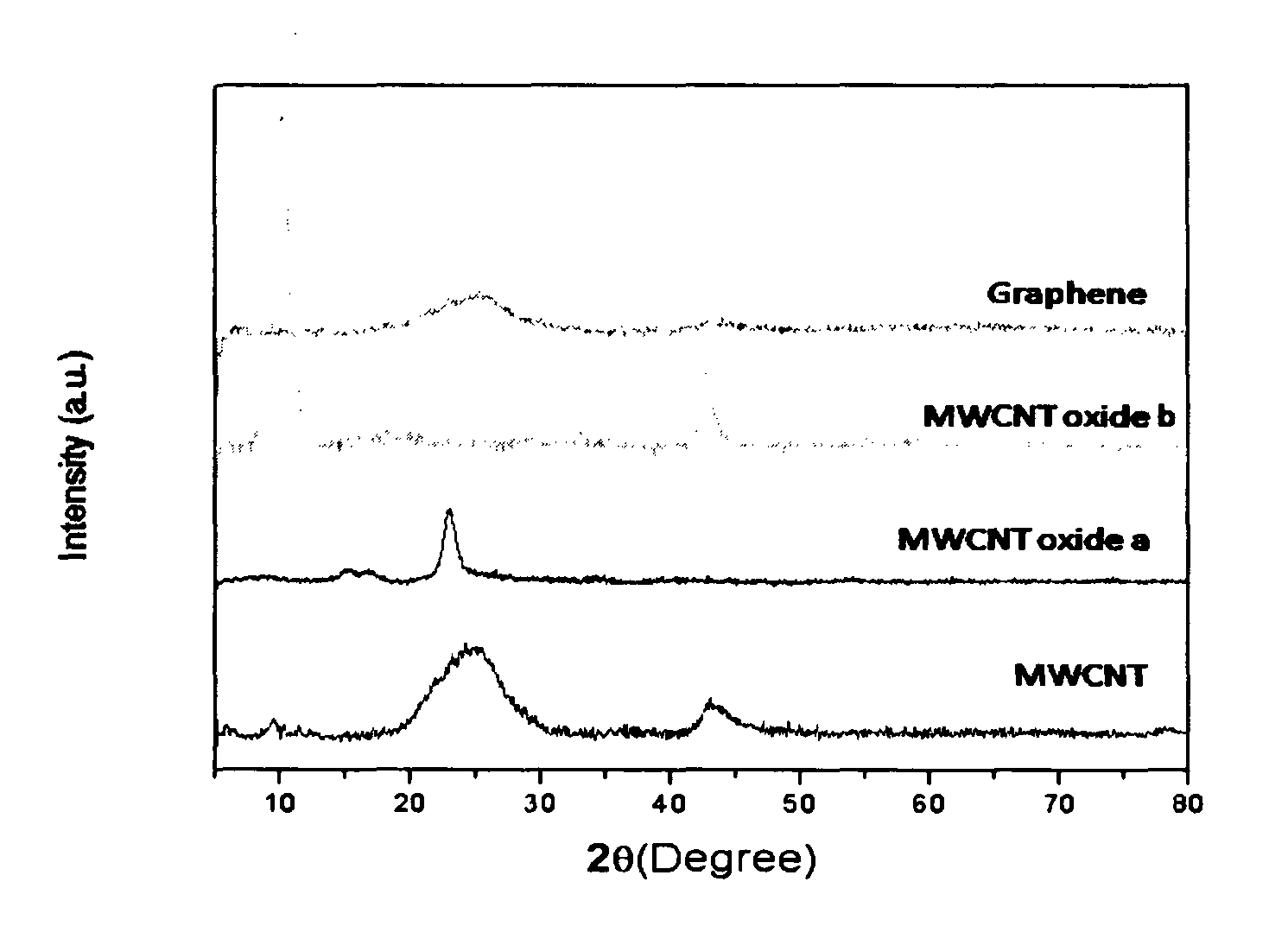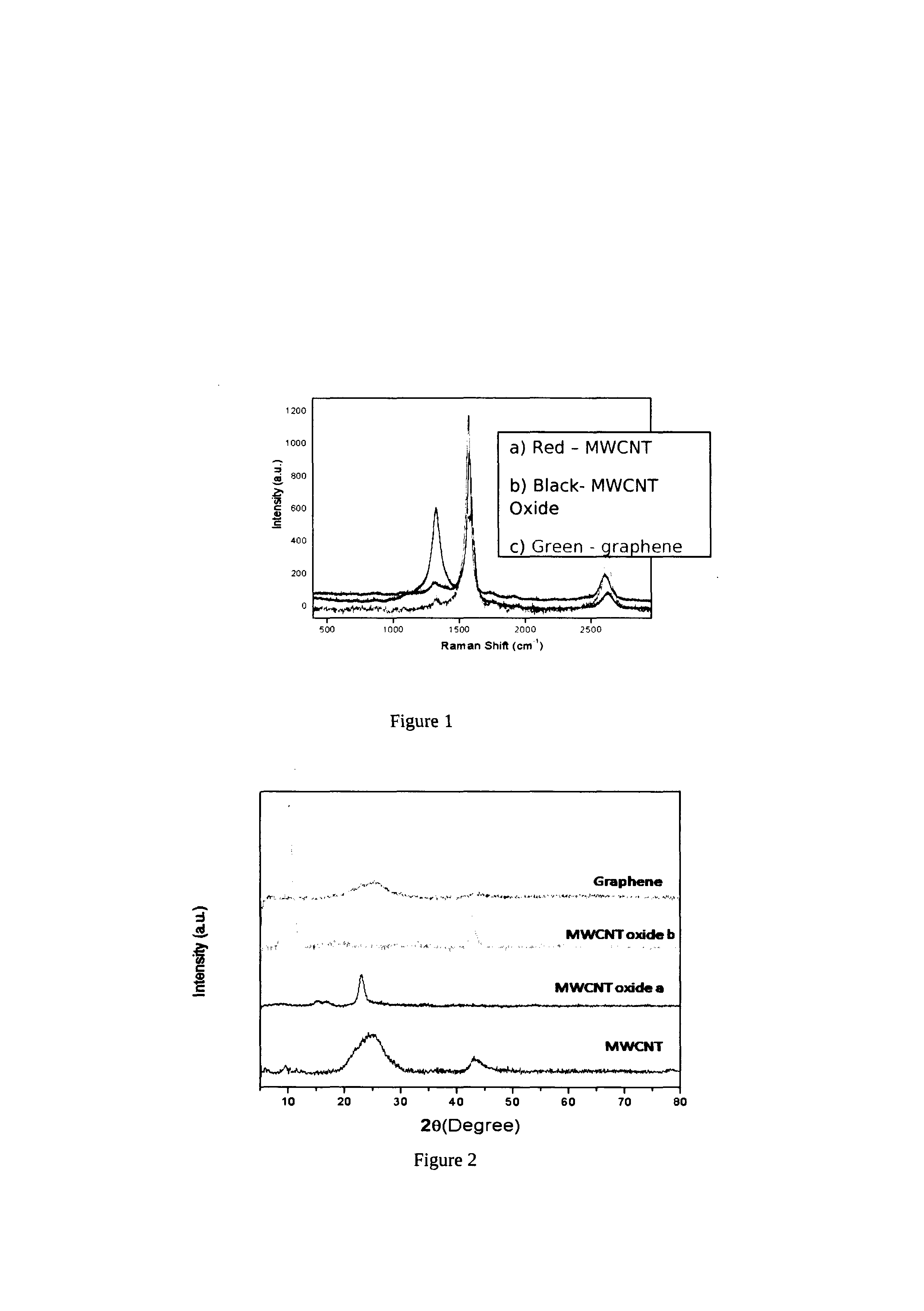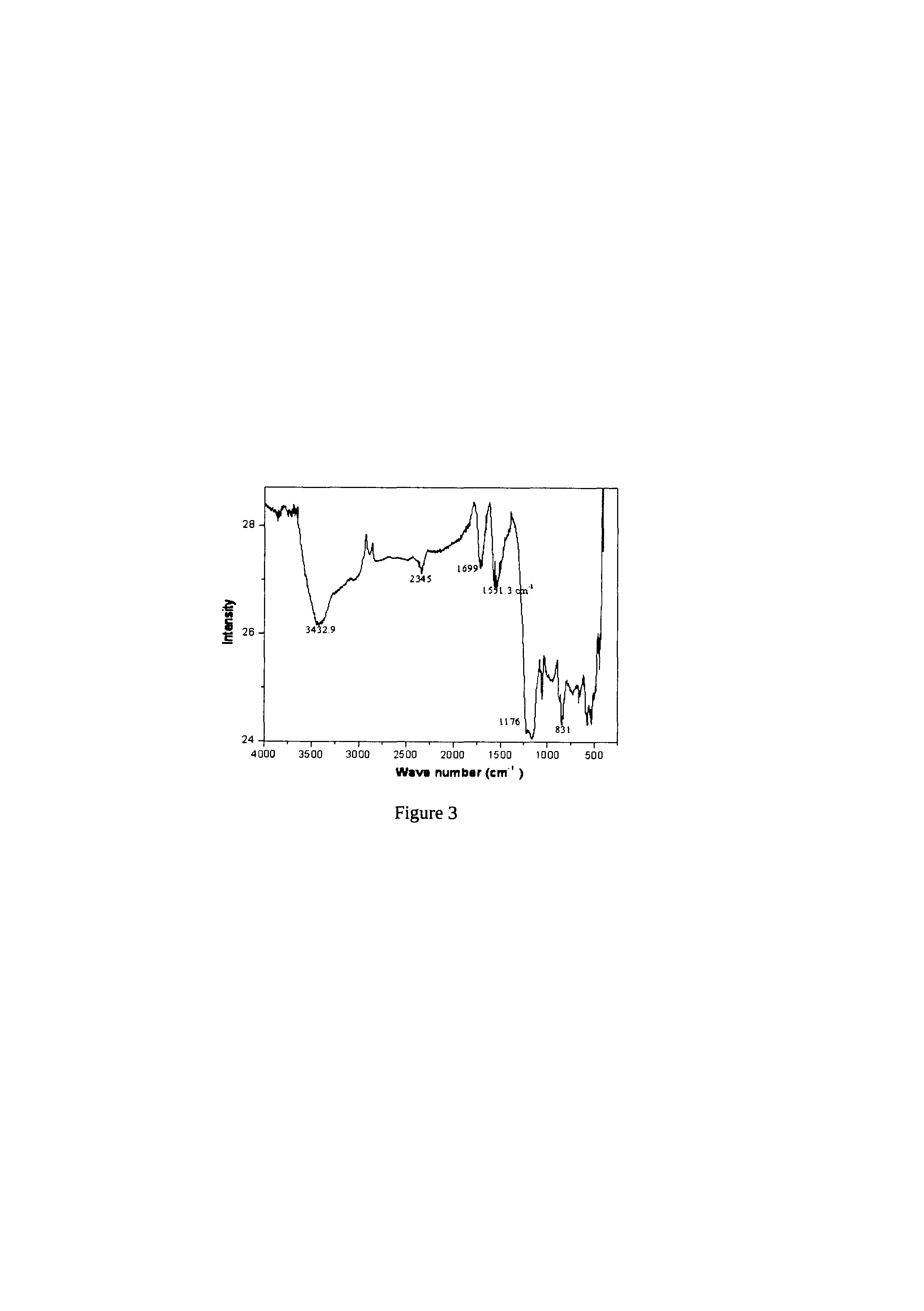Electrochemical process for synthesis of graphene
a graphene and electrochemical technology, applied in the field of electrochemical route for the synthesis of graphene, can solve the problems of poor quality and yield, difficult control of both layer thickness and edge smoothness in an accurate manner, and limitations of solvothermal synthesis techniques, etc., to achieve uniform layer thickness and less defects
- Summary
- Abstract
- Description
- Claims
- Application Information
AI Technical Summary
Benefits of technology
Problems solved by technology
Method used
Image
Examples
example 1
[0052]10 mg of SWCNT (99% pure, Aldrich Company) was added to 20 ml of ethanol and 5 μl of 0.1% of Nafion (as binder). This solution was sonicated for 15 minutes to get complete dispersion. This was subsequently deposited onto conducting substrate, a glassy carbon electrode(GCE). Before the deposition, the glassy carbon electrode was polished with alumina powder, rinsed thoroughly in acetone, and finally dried. The deposition procedure involves spreading of a 5 μl portion on this pretreated bare GCE using a micropipette tip. This GCE was allowed to dry in an inert atomospere for 1 hour to form a thin uniform layer of CNT. The electrochemical oxidation of CNT was carried out in a three-electrode system (Pt as counter electrode, saturated Mercury Mercurous Sulphate as reference electrode) with the help of a dc power supply at fixed positive potential of 0.5, V for different periods such as 4, 8, 12 hours in 0.5 M H2SO4 The extent of oxidation was confirmed by various characterization ...
example 2
[0053]10 mg of MWCNT (99% pure, Aldrich Company) was added to 20 ml of ethanol and 5 μl of 0.1% of Nafion (as binder). This solution was sonicated for 15 minutes to get complete dispersion. A portion from this was subsequently deposited onto a conducting substrate, a glassy carbon electrode (GCE). Before the deposition, the glassy carbon electrode was polished with alumina powder, rinsed thoroughly in acetone, and finally dried. The deposition procedure involves spreading of a 5 μl portion on this pretreated bare GCE using a micropipette tip. This GCE was allowed to dry in an inert atomospere for 1 hour to form a thin uniform layer of CNT. The electrochemical oxidation of CNT was carried out in a three-electrode system (Pt as counter electrode, saturated Mercury Mercurous Sulphate as reference electrode) with the help of a dc power supply at fixed positive potential of 0.6 V for different periods such as 4, 8, 12 hours in 0.5 M H2SO4 The extent of oxidation was confirmed by various ...
example 3
[0054]10 mg of DWCNT (99% pure, Aldrich Company) was added to 20 ml of ethanol and 5 μl of 0.1% of Nafion (as binder). This solution was sonicated for 15 minutes to get complete dispersion. This was subsequently deposited onto conducting substrate, a glassy carbon electrode (GCE).
[0055]Before the deposition, the glassy carbon electrode was polished with alumina powder, rinsed thoroughly in acetone, and finally dried. The deposition procedure involves spreading of a 5 μl portion on this pretreated bare GCE using a micropipette tip. This GCE was allowed to dry in an inert atomospere for 1 hour to form a thin uniform layer of CNT. The electrochemical oxidation of CNT was carried out in a three-electrode system (Pt as counter electrode, saturated Mercury Mercurous Sulphate as reference electrode) with the help of a DC power supply at fixed positive potential of 0.8 V for different periods such as 4, 8, 12 hours in 0.5 M H2SO4 The extent of oxidation was confirmed by various characteriza...
PUM
| Property | Measurement | Unit |
|---|---|---|
| Fraction | aaaaa | aaaaa |
| Time | aaaaa | aaaaa |
| Time | aaaaa | aaaaa |
Abstract
Description
Claims
Application Information
 Login to View More
Login to View More - R&D
- Intellectual Property
- Life Sciences
- Materials
- Tech Scout
- Unparalleled Data Quality
- Higher Quality Content
- 60% Fewer Hallucinations
Browse by: Latest US Patents, China's latest patents, Technical Efficacy Thesaurus, Application Domain, Technology Topic, Popular Technical Reports.
© 2025 PatSnap. All rights reserved.Legal|Privacy policy|Modern Slavery Act Transparency Statement|Sitemap|About US| Contact US: help@patsnap.com



